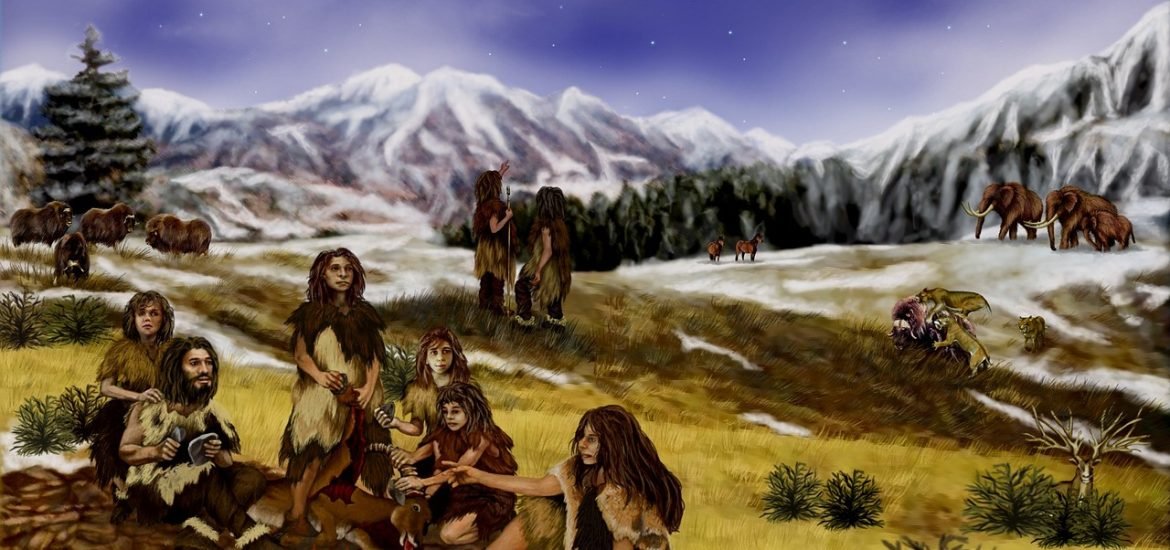
Twenty years of excavations in Portugal show that Neanderthals were just as intelligent as Homo sapiens, according to a study published in the scientific journal PLOS One.
Neanderthals knew how to make a fire and use it for cooking, among other things, which clearly indicates their intelligence. “This confirms our observations and theories from previous studies,” explained Diego Angelucci, archaeologist at the University of Trento and co-author of the study. “Neanderthals were capable of symbolic thought, could create artistic objects, knew how to decorate their bodies using personal ornaments, and had an extremely varied diet. Add to that that, based on our findings, we can say with certainty that they habitually ate cooked food. This ability confirms that they were as skilled as the sapiens who lived millennia later”.
The big question still remains: although they could use fire, were they able to start it as needed? One thing is to use fire that is started by natural processes, such as lightning, and another is to start a fire and collect wood to keep it going. After a 20-year excavation in the Gruta de Oliveira in central Portugal (one of the most important European archaeological sites for the Middle Palaeolithic), the team of Portuguese, Italian, and Spanish researchers have no doubt that Neanderthals could make a fire and use it in their daily life.
The cave is part of the Almonda karst system, a large network of caves inhabited in different periods during Prehistory. The oldest layers of the Gruta de Oliveira date back about 120,000 years ago, while the most recent parts date back to about 40,000. Researchers found evidence that that Neanderthals lived in this place between 100,000 and 70,000 years ago. “For us, Almonda is a gift that keeps on giving for the variety and quantity of artefacts and remains that we have found over the years: from the remains dating back to the Lower Palaeolithic to the chipped stones of the Mousterian culture, there is really everything,” said Angelucci.
The team found traces of about a dozen hearths intentionally built in the cave during the excavations. In addition, findings inside and around these hearths show that the inhabitants used it to cook their food. “We found burnt bones, burnt wood, and ash remains,” said Angelucci. “And the rock underneath has been reddened by the heat: this is a crucial detail because it tells us that the structure is in a primary position. And it has always been there. Fire is a fundamental element in their daily lives. It makes the place comfortable and helps socialization. It gives back that basic idea of “home” that perhaps could also apply to them.”
After finding out that they could cook, the team was curious about the diet that Neanderthals followed. “We were able to find out what they ate and even the cooking techniques they used. We found the remains and burnt bones of cooked goats, deer, horses, aurochs (extinct bulls), rhinos, turtles, which were probably laid on their carapace and stewed on hot stones. Meat was on the menu in this inland cave, but in other excavations in caves overlooking the western Mediterranean Sea near Cartagena (Spain), remains of fish, mussels, and molluscs, even roasted pine nuts, were found.”
The last mystery left to solve is how the Neanderthals started the fire. “Perhaps they did as in Neolithic times, striking flint rocks against another rock to throw sparks on a tinder, such as a dry nest, for example. This is a prehistoric technique that was discovered by studying Ötzi, the Ice man. So far, however, we have found no evidence of this.” Nevertheless, they found no significant differences between how the Neanderthals lived and how Homo sapiens lived. “We found no difference: they lived in the caves in similar ways. Their skills are also a sign of intelligence. They did not belong to different species; I would say that they were different human forms,” concluded the researcher.
Angelucci DE, Nabais M, Zilhão J. Formation processes, fire use, and patterns of human occupation across the Middle Palaeolithic (MIS 5a-5b) of Gruta da Oliveira (Almonda karst system, Torres Novas, Portugal). PLoS One. 2023 Oct 11;18(10):e0292075. doi: 10.1371/journal.pone.0292075